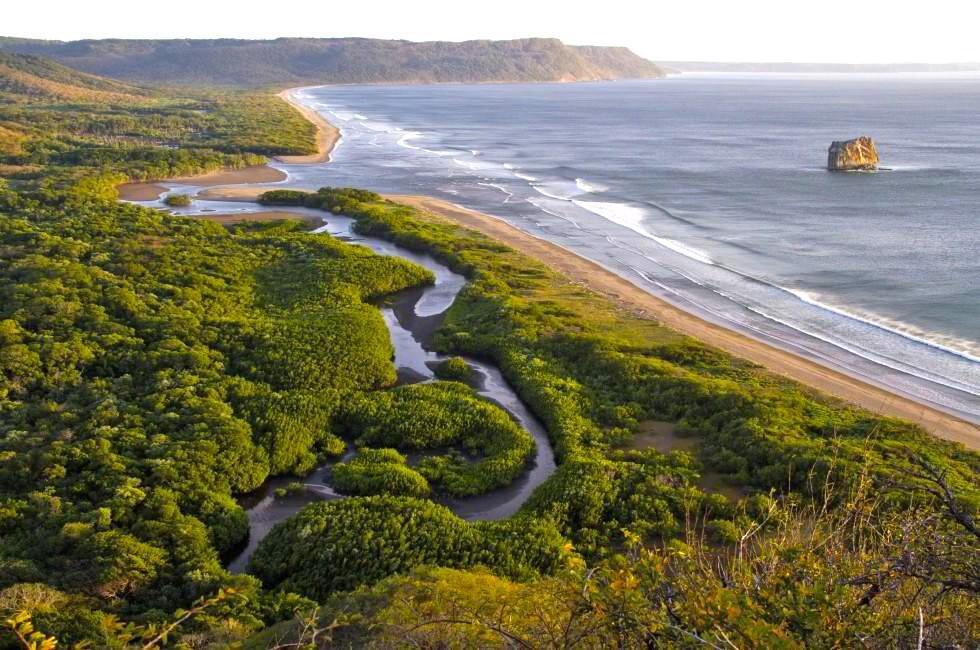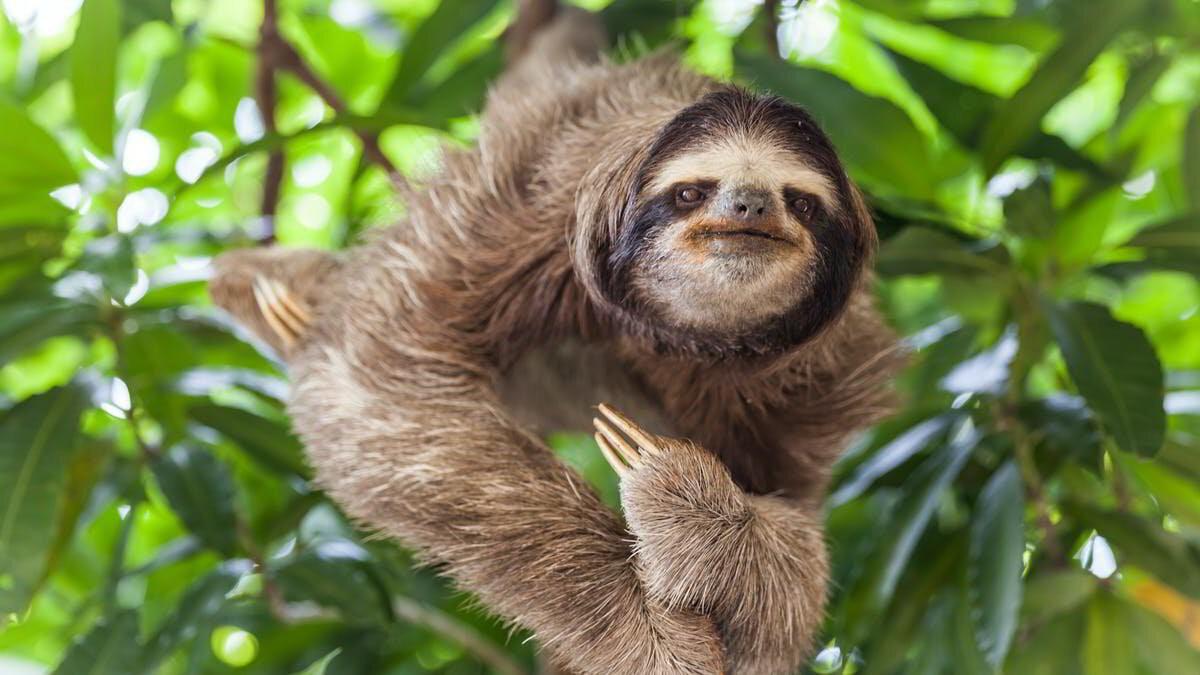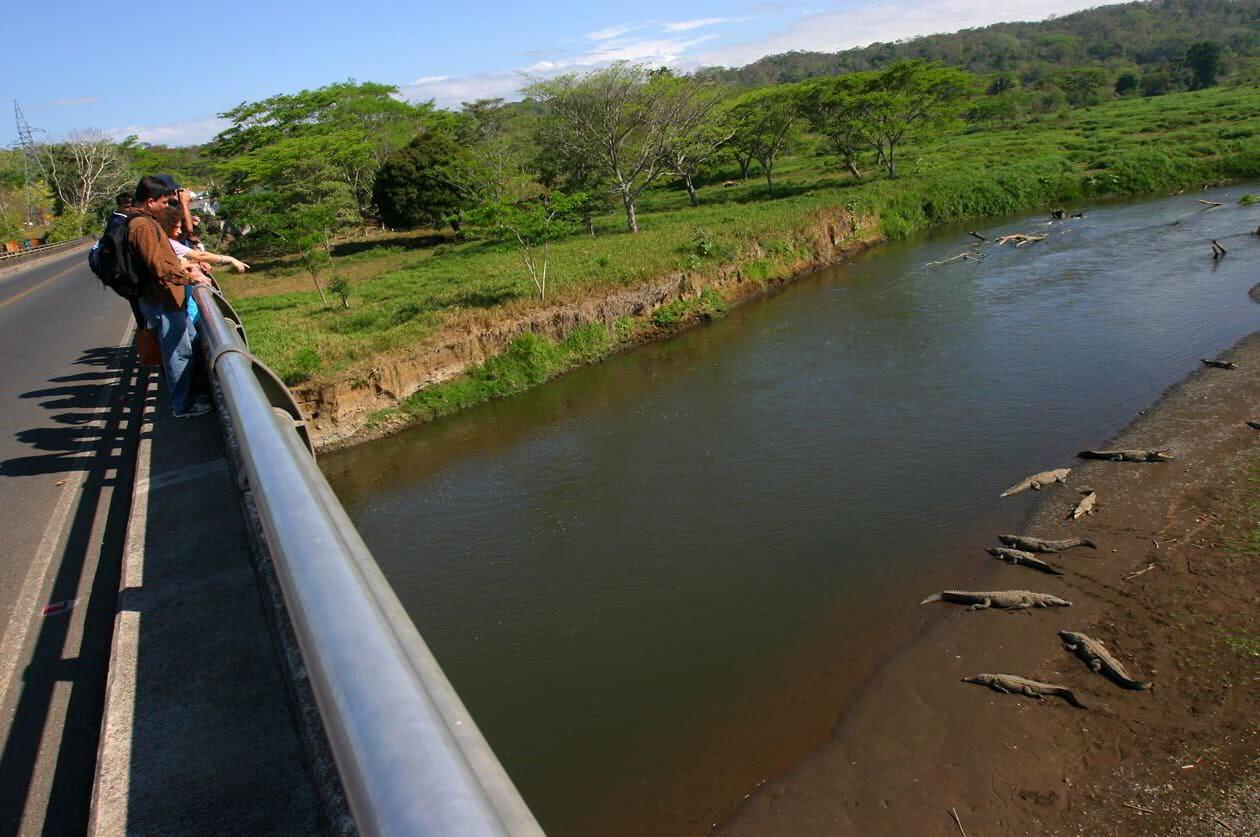If you have not yet made up your mind about where to live in Costa Rica, the Central Pacific coast should be high on your list. Whether you chose the happening town of Jaco, the sheltered boating bay of Herradura, or Tarcoles, where the river meets the ocean, one thing you will never be far from, is nature. Enveloped in magnificent mountains with cascading waterfalls, and volcanic sandy beaches, fringed with verdant forests - what more could you want?

Photo by fodors.com
Where the Amazonian rainforest meets Mesoamerican dry forest, Carara National Park,16km north of Jaco, is not only one of Costa Rica’s most biodiverse wildlife refuges, it is easy to get to, and accessible to all.
This 4700hectare oasis can be found, quite unexpectedly, just off Route 34 - the perfect place for expats exploring Costa Rica’s Central Pacific coast. If you also happen to be arriving at Juan Santamaria International airport or are living in the capital city, driving from San José to the National Park, takes just 2hours or less.
Carara’s unique transition of two forest habitats is home to an astonishing 480 plant species, which have in turn given rise to an extraordinary plethora of creatures. Over 100 different species of mammal make their way through the trees, including two-toed sloths – most likely sleeping, or creeping in slow-motion along the branches; white-tailed deer - Costa Rica’s National animal can be spotted grazing in the understory; and let us not forget monkeys, as they munch on the fruits of their favorite strangler fig trees – Mantled howler, white-faced capuchin, and endangered spider.
The blending of the wet and dry forests has led to an impressive count of over 400 different bird species, making Carara one of the most important places for bird-watching in the country. Lookout for national treasures, such as scarlet macaws, toucans, and manakins nesting and feeding in the canopy, and water oving herons, grebes, and jacanas, stalking their prey in the shallows of the adjacent wetlands.
In amongst this leafy jungle, you can also discover more than 100 different species of reptile. One such species is the basilisk, or Jesus Christ lizard, named for its ability to walk, or in this case, run on water. Most likely found basking on a tree trunk, where the forest meets the water’s edge, do not be fooled by its clever camouflage! Poison dart frogs are just some of over 60 species of amphibians lurking in the undergrowth – a keen eye is needed to spot these stunningly colored creatures, but remember, look, never touch!
The Quebrada Bonita Ranger Station marks the main entrance to the National Park and is also the start of three walking trails – Universal Access, Quebrada Bonita, and Las Aráceas. Off-road parking, toilets, and drinking water are all available at the Ranger Station.

Photo by Theconversation.com
The first National Park in Costa Rica to have a universal access trail, it is possible for everyone, no matter their mobility or ability level, to have an unforgettable nature experience at Carara. The 1.2km Universal Access Trail includes nine resting areas in which to relax and soak up the beauty of the forest; drinking water stations to keep hydrated in the tropical heat; an auditive system; Wi-Fi; and signage in Braille, English, and Spanish, so all visitors can find out more about this fascinating habitat.
Quebrada Bonita means ‘Beautiful Creek’, and this is exactly what you can walk beside as you take this circular, 1.3km Trail. The dense, primary forest that surrounds you, has been undisturbed for thousands of years, and trees such as wild cashew, can tower 200ft above your head!
The Las Aráceas Trail is a plant-lovers paradise. This 1.2km, circular route takes you on an hour’s adventure through the primary rainforest. It is named for an important family of arum lily-like plants, called Araceae, growing gracefully along the trail. The Mano de Tigre, or Swiss Cheese Plant, can also be seen snaking its way up through the trees. Unfurling from the dark depths of the forest floor, it searches desperately for light. Lobbed, and dotted with holes, the leaves of this clever plant have evolved to allow penetration of sunlight lower down the stem.
1km north of the main entrance, you will find parking for the Laguna Meándrica Trail. Running parallel for 4.5km along The Tarcoles River, it branches off into lagoons and marshes and boasts some of Carara’s best wildlife spectacles. The river marks the northern boundary of the Park and is home to 2,000 American Crocodiles. These prehistoric reptiles can reach 6meters in length! This trail is also a must for birders in the early morning. Be aware the Laguna Meándrica Trail is likely to be closed during August and November due to flooding in the wettest part of the year. Always talk to park rangers before venturing onto trails.
Crocodiles can also be seen from the Rio Grande Tarcoles River Bridge, which, traveling south towards Jaco, is on Route 34, 2km before the main Park entrance. If you happen to be on the bridge at dusk or dawn, you might be lucky enough to see the magnificent spectacle of up to 200 scarlet macaws flying west along the river. On the way to their night-time roost in the mangroves, they return by the same route the following morning, their raucous squawking a real wake-up call!

Photo by Ticotimes.net
You can visit Carara National Park every day of the year. During the dry season (December to April) it is open 7am to 4pm. Note, March and April are the hottest and driest months in the park, and average temperatures are in the mid-80s. In the wet season (May to November) opening times change to 8am to 4pm.
If you are already a resident, the entry fee is ¢1.000 for an adult and ¢500 for a child (6 to 12 years). If you are not yet a resident, the fees are $10 and $5 respectively. You must present an identity card to prove your status. Over 65s can enter for free by presenting an identity card. Both cash and credit card payments are accepted. There is no need to make a reservation. If you want to learn more in-depth about the local flora and fauna, it is recommended to hire a guide at the ranger station, to accompany you on your walk. This can cost between $25 and $40 per person.
Trail times range from half an hour to 4hours, so whether it is a quick walk to stretch your legs on a long journey, or a full day’s adventure you are after, Carara National Park has something for everyone. Taking a walk on the wild side has never been so easy!




